Post-war training film about loading, aiming, and firing the Iowa Class 16″ guns.
(The 16″/50 Gun & Turret, Major Caliber Guns & Turrets, United States Navy Training Film, MN-9321c, 1955.)
Post-war training film about loading, aiming, and firing the Iowa Class 16″ guns.
(The 16″/50 Gun & Turret, Major Caliber Guns & Turrets, United States Navy Training Film, MN-9321c, 1955.)
U.S. Navy WWII vessel type abbreviations from FM 30-50: Recognition Pictorial Manual of Naval Vessels, U.S. Navy Department, September 1943:
TYPE DESIGNATIONS: U.S. NAVAL VESSELS
PRINCIPAL COMBATANT TYPES
BB Battleship CB Large Cruiser CV Aircraft Carrier CVL Aircraft Carrier (Light) CVE Aircraft Carrier (Escort) CA Heavy Cruiser CL Light Cruiser DD Destroyer DE Destroyer Escort Vessel SS Submarine SM Minelaying Submarine
Recent issues of Ampersand Publishing’s reference magazine Allied-Axis: The Photo Journal of the Second World War:
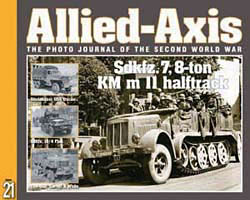 |
Issue 21 Studebaker US6 trucks; SdKfz 7, 8-ton halftrack; SdKfz 10/4 flak; Corbitt & White trucks |
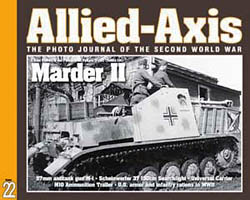 |
Issue 22 M15/M15A1 halftrack multiple gun motor carriage; Scheinwerfer 150-cm searchlight; 57-mm antitank gun; Universal carrier; M10 ammunition trailer; U.S. rations |
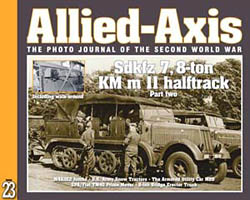 |
Issue 23 M4A3E2 Jumbo tank; SdKfz 7, 8-ton halftrack; U.S. snow tractors; Armored utility car M20; SPA/Fiat prime mover; 6-ton bridge erector truck |
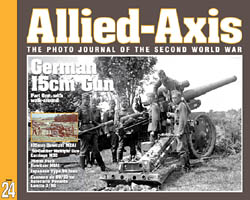 |
Issue 24 .50-Caliber multiple gun carriage M55; Cannone de 90/53 on Autocarro Pesante Lancia; 75mm Pack Howitzer; Japanese Type 95 tank; 105mm Howitzer M2A1; sFH 18 15-cm howitzer |
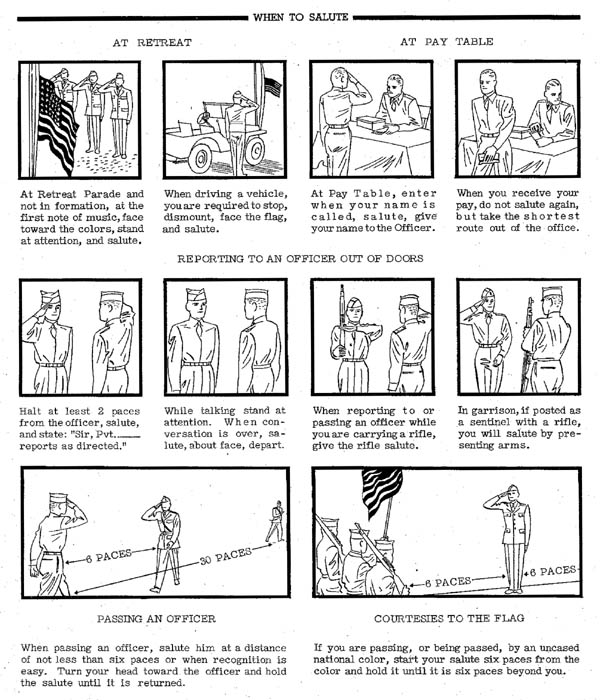
Source: The Ordnance Soldier’s Guide
The following two drawings of Molotov cocktails being used against Russian tanks appeared in the article “German Close-in Tactics Against Armored Vehicles” in Tactical and Technical Trends, No. 23, April 22, 1943. The article contained translated German documents describing infantry close-combat techniques against Russian tanks on the Eastern Front.
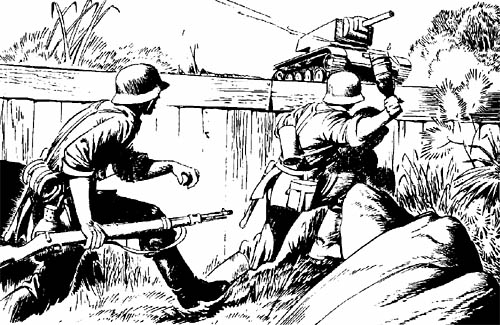
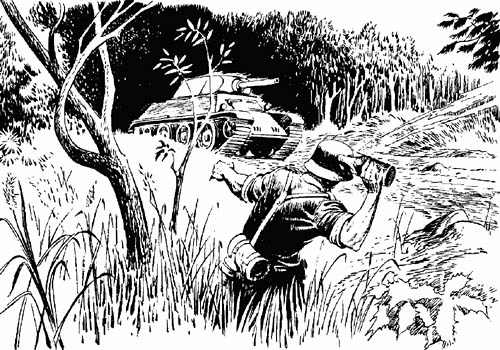
Diagram of snow camouflage for 90mm antiaircraft gun battery, from “Antiaircraft Artillery Notes,” No. 9, December 1944:
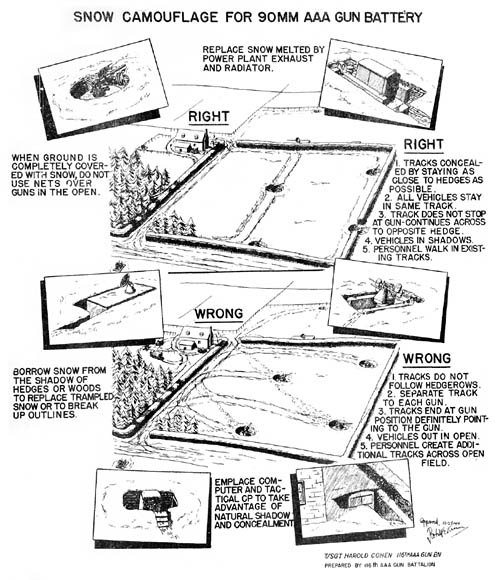
The U.S. military intelligence articles from Tactical and Technical Trends, No. 12, November 1942 have been added to the main website:
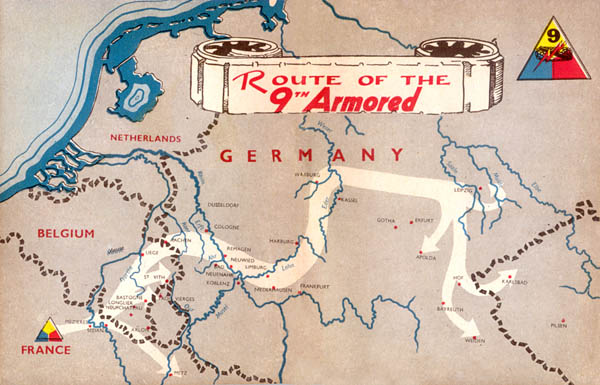
“Route of the 9th Armored” from the G.I. Stories booklet: The 9th: The Story of the 9th Armored Division published by the Information and Education Division, ETOUSA in 1945.